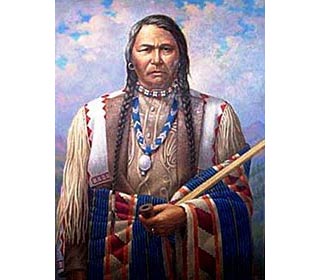Fast Facts about the History of Utah Indians
The climate, land, history, environment and natural resources that were available to the indigenous Indian tribes in Utah resulted in the adoption of the Southwest culture and others adopted the Great Basin culture. - Name of State: Utah
- Meaning of State name: Named after the Ute Indian tribe
- Geography, Environment and Characteristics of the State of Utah: Deserts, canyons and plateau areas
- Culture adopted by Utah Indians: Southwest Cultural Group and others adopted the Great Basin culture
- Languages: Southern Athabaskan (Apachean) language, Shoshonean or Uto-Aztecan
- Way of Life (Lifestyle): Hunters and Farmers
- Types of housing, homes or shelters: Farmers lived in Adobe (pueblo) houses. Hunters lived in Hogans
History Timeline of the Utah Indians - 10,000 BC: The first indigenous people were of the Paleo-Indian culture who lived in caves or were Nomadic Hunters using stone weapons
- 9000 BC: Clovis Culture (named after artefacts found at Clovis, New Mexico. These people used a distinctive type of fluted arrow point
- 7000 BC: Archaic Period in which people built basic shelters and made stone weapons and stone tools
- 2500 BC: Gulf Formational Period with development of ceramics and pottery
- 1000 AD: Woodland period with permanent houses and farming
- 1776: Spanish priests, Father Silvestre Velez de Escalante and his superior Francisco Atanasio Domínguez start from Santa Fe to explore Utah
- 1775: 1775 - 1783 - The American Revolution.
- 1776: July 4, 1776 - United States Declaration of Independence
- 1803: The United States bought the Louisiana Territory from France for 15 million dollars for the land
- 1812: 1812 - 1815: The War of 1812 between U.S. and Great Britain, ended in a stalemate but confirmed America's Independence
- 1830: Indian Removal Act
- 1832: Department of Indian Affairs established
- 1841: Captain John Bartleson leads first wagon train of settlers, across Utah to California
- 1844: Fort Robidoux is burned by Ute Indians
- 1849: First confrontation between the Ute and the settlers at "Battle Creek" in Pleasant Grove.
- 1853: Walker War (1853–1854) with the Ute Indians begins over slavery among the Indians. Wakara (Walker) leads the Utes in Utah in a series of raids on Mormon settlements
- 1860: Paiute War also known as Pyramid Lake War, Utah Territory, (now Nevada)
- 1861: 1861 - 1865: The American Civil War.
- 1862: U.S. Congress passes Homestead Act opening the Great Plains to settlers
- 1865: Black Hawk's War (1865–1872) was the last major Indian conflict in Utah - see Black Hawk
- 1865: The surrender of Robert E. Lee on April 9 1865 signalled the end of the Confederacy
- 1887: Dawes General Allotment Act passed by Congress leads to the break up of the large Indian Reservations and the sale of Indian lands to white settlers
- 1915: The Bluff War, aka Posey War or the Polk and Posse War, Ute and Paiute and the US army. Location: San Juan County, Utah and Montezuma County, Colorado
- 1969: All Indians declared citizens of U.S.
- 1979: American Indian Religious Freedom Act was passed
History of Utah Indians - Destruction and Decline
The history of the European invasion brought epidemic diseases such as tuberculosis, cholera, influenza, measles and smallpox. The Native Indians of Utah had not developed immunities against these diseases resulting in huge losses in population. Exploitation including the leverage of taxes, enforced labor and enslavement were part of their history, taking their toll on the Utah Indians. |
